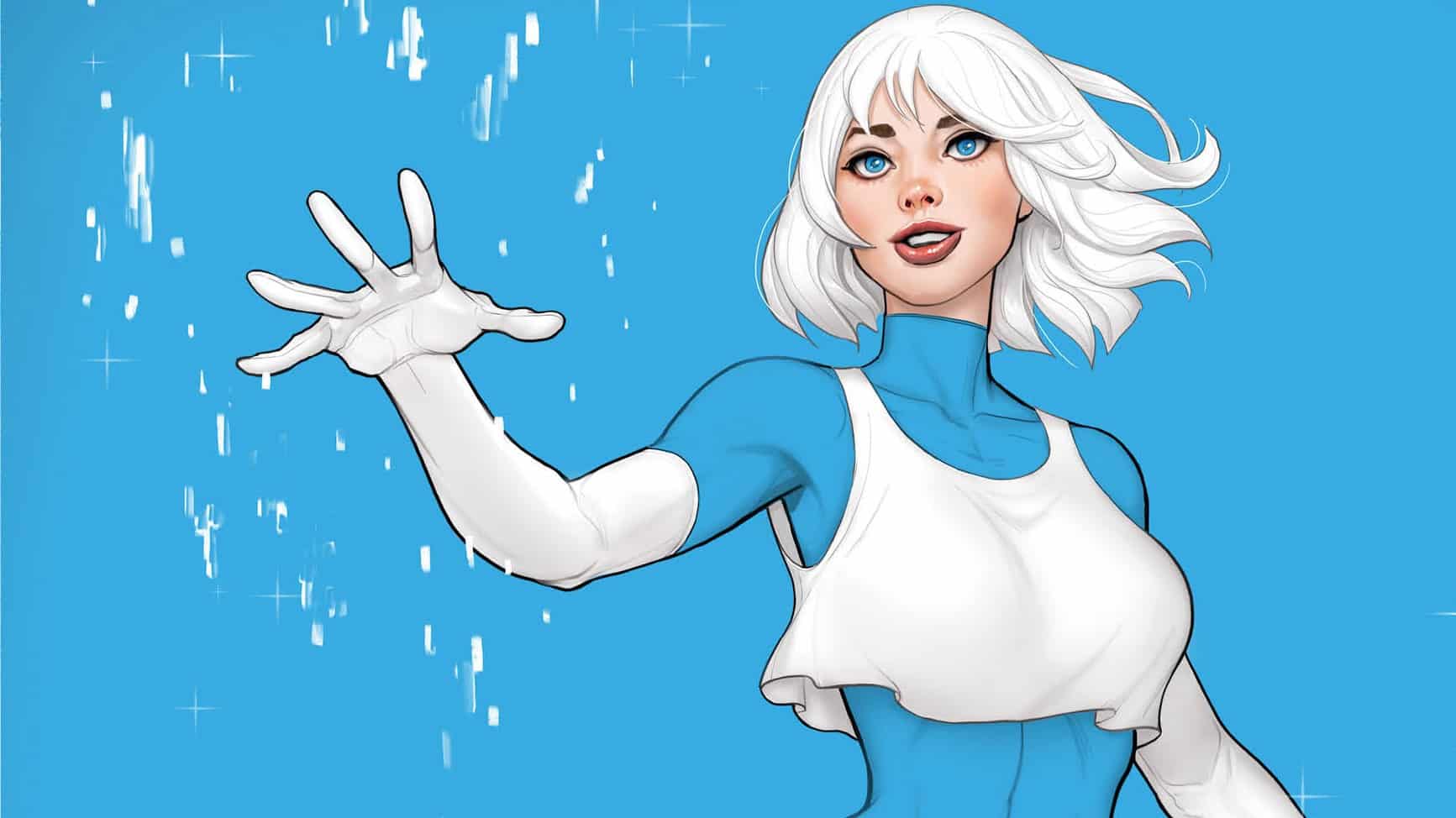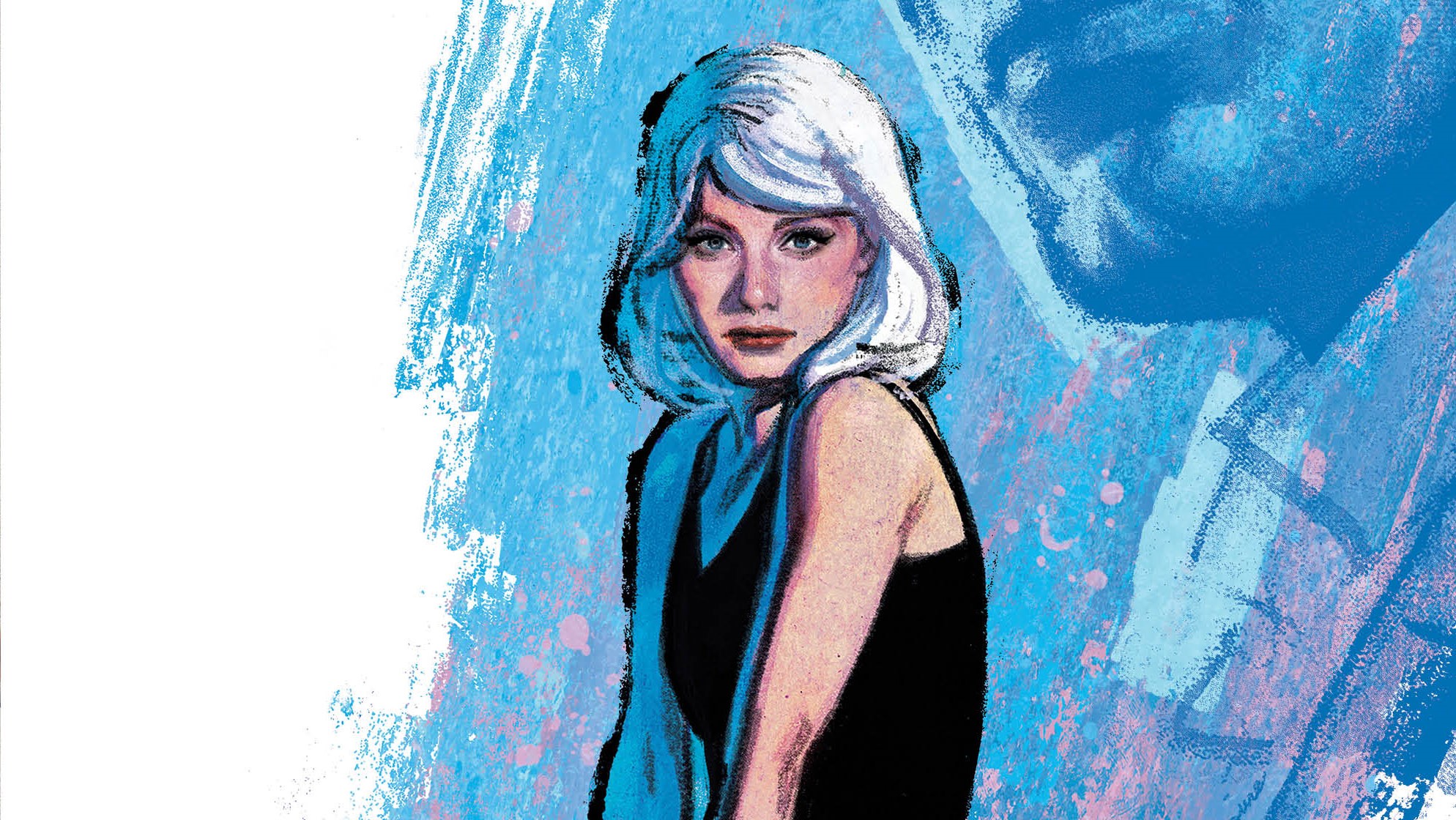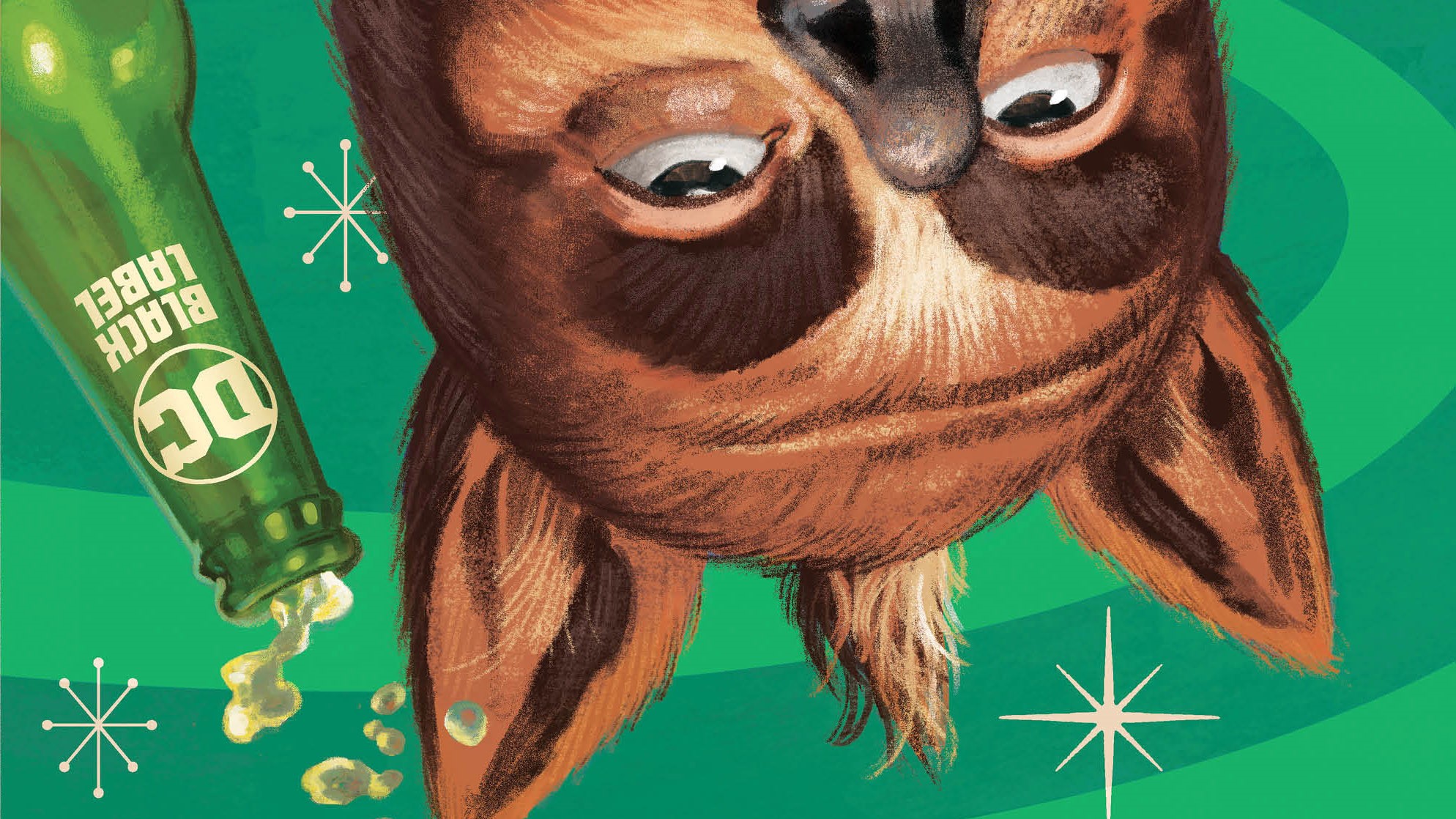Christopher Chance has spent his life in defiance of death, and those who would be afraid of it. Now, death has come for him at last, and it’s time for the Human Target to finally find out if people were right to be afraid all along. The Human Target #12 is written by Tom King, drawn by Greg Smallwood and lettered by Clayton Cowles for DC Black Label.
Armaan Babu: So here we are, at the end. All illusions dropped, all Nancy-suspicions discarded, and for better or worse, we have the whole picture. I wasn’t expecting to have enjoyed it — but even if I had been, I certainly wouldn’t have expected to have enjoyed it this much. What did you think, Dan?
Dan Grote: Thomas King and I have been married as writer and reader for about eight years now, since The Vision. Like many romances, it started as a passionate affair. Over time, that limerence faded into a rote recitation of duty — he to write and I to read. Eventually the seven-year itch set in and I strayed. This series, for all its flaws, put a spark back into our relationship.
That said, after reading Danger Street #1, I still think I was right to ask for a divorce.
What Am I Listening For?

Armaan: We open with the thing we’ve been promised all along — the death of Christopher Chance. No last-minute twists or saves, no sudden cures; Chance is dead, lying in the same hotel room we saw him in when all this began. I went back to that first issue to reread the scene, and it fits in perfectly here.
There’s a lot of rereading required for this first scene, actually. It’s mixed in with the opening of #1. It’s mixed in with the penultimate scene in this same issue. It’s got unmarked caption boxes of Ice’s last conversation with Chance overlaid with the scene of Ice discovering Chance’s body. The unmarked caption boxes are arranged, seemingly at random — it takes a re-reading or two just to figure out who said what.
Tom King is a non-linear storyteller. It’s rarely satisfying, but it’s what you get reading a Tom King book. You have to put a fair amount of work as a reader into experiencing some scenes coherently, but in this case, it’s worth the effort. As much as superhero comics condition us to believe no one really dies, and certainly not for long, this series was always about Chance’s death. There’s a humility to it that hits home with me that I want to talk about, but first, I wanted your thoughts, Dan — what did you think of how this final farewell between Ice and Chance (not to mention Chance and the readers) went down?
Dan: I agree the caption boxes were hard to follow and required a second reading. I want to argue there should have been some sort of signifier to differentiate between Ice’s lines and Chance’s, but sometimes the reader has to do the work. Sometimes — especially with how the rest of the comic plays out — rereading a scene pays dividends and enriches the story. Clayton Cowles is a talented letterer because he works simply and cleanly. I’ve been reading lots of mid-’90s Excalibur for another project, and it’s chockablock with bespoke speech balloons and narration boxes because we’re at the beginning of Richard Starkings and Comicraft lettering every Marvel book and they’re just playing with fonts to see what works like a child tries to play with all their new toys at once on Christmas morning. It’s refreshing when a letterer can move the story along without a lot of flash and razzle-dazzle.
Also, that splash page where Ice wallows in grief next to Chance’s body? Aces, Smallwood, just aces. This is photo reference used to make something beautiful.
Armaan: Smallwood does exceptional stuff with Ice’s body language in this final issue. Her grief here is especially powerful. Her expression says so much — there’s a calmness to the grief here, a real finality. The grief of someone who knew this was coming, who made a space for it, and who lets herself give into it entirely.
Ice, through most of this series, has been a bit of a pin-up image. “The sweet one.” I’ve said I wished we could see inside her head more — and here, alone, we see her express something genuine, and it’s beautiful and heartbreaking.
Dan: I also want to take a second here to call out the back cover of the book — home for the past 12 issues to a hanging pinup calendar that tracks Chance’s final days. The 12th version of this appears to show Ice having obliterated Chance’s hotel room after he died. There’s a chunk of ice with a red, fuzzy shape in it that once was Rocket Red’s tranquilizer dart, the one that missed its (human) target in issue #8. It’s rad AF. It also shows what happened after the splash of Ice crying without SHOWING what happened. That’s using every part of the animal to tell a story, and way more effective than an ad for whatever DC animated feature is now available on Blu-ray and streaming.
Armaan: I completely missed that, but that’s a brilliant touch.
We jump ahead a few days, and the mask is back up. It’s a short and sweet scene of Ice and Luigi, with the two of them working to move on, and letting us, the readers, know that Chance really isn’t coming back.
It’s interesting to see Ice back to her old self — which in this comic means that her walls are back up. Her eyes are merry, her charisma’s off the charts, and she works to make every person she talks to feel like they’re the most special person in the world.
What I like about this scene is how it ends; and how it sets up something we’ll see at the end of the book. Ice throws Luigi a simple Italian phrase — which is when we find out that Luigi isn’t Italian at all. The idea that he was was a lie. Ice’s mask might be up, but she’s not alone.
Everybody’s lying. Here, at the end? That’s as clear as day. Or perhaps ice constructs.
Dan: I love this scene. We didn’t get to spend nearly enough time with Chance’s pizza purveying landlord, and here it’s clear he’s someone Chance helped out of a jam and gave a new life to. I love that they dismiss the false hope that Chance could still be out there, doing his shtick, wearing a mask. No. This is it. He’s gone, and it’s time to spread his ashes and figure out where we go from here.
Let’s Get Some Things Crystal Clear

Armaan: We’ve finally seen the whole picture. Chance has dug up every last clue he could find — but it’s left to Ice to pick up the pieces and lay out the picture she wants the world to see. This is a big part of what made this issue work so well for me. A lot of page space dedicated to tidying things up, all centered on Ice, whose true self we only caught glimpses of as this series has progressed.
She grieves with the only other person who knows the full story — Fire — while assuring her that with Chance dead, their conspiracy remains secret. She shuts down any talk of a further investigation into things that J’onn is about to begin, putting him in his place with some very direct blackmail and some light life-threatening. Finally, she disposes of Chance’s ashes in the most perfect way possible — by taking the bottle they’re stored in and smashing Guy Gardner in the head with it, scattering the ashes to sea while he lays there knocked out cold.
It’s perfect.
Dan: One punch, baby! The bit is funny again.
Armaan: These three scenes were perfect, as far as I’m concerned. A highly enjoyable take on this version of Ice, of these versions of the characters. Everything’s been laid bare by the end. The masks are clear, as are the lies everyone is telling both themselves, and each other — it’s hard to see anything else. You have to wonder if it’s how Chance saw the world — if all he saw were the lies people wanted others to believe, and if that’s why he was so good at impersonating them.
Dan: I like this, because you’re describing The Human Target in the manner of my current favorite TV show, Poker Face. And now I want another Human Target TV show produced by Rian Johnson. Imagine the stunt casting!
Armaan: Dan, we got a Peacemaker TV show. A Human Target procedural is not that hard to imagine anymore. Nancy can finally get the screen time she deserves!
Dan: Margo Martindale for Nancy or we riot.
Armaan: Through these scenes, we see that a little part of Chance’s ruthless impatience has infected Ice. She’s still her own person, yes, but, if they get in her way, she’s a LOT less willing to put up with people’s $#!^, as King would put it.
Dan: I still hate the grawlixes. It’s nowhere near as clever as King thinks it is, and it takes me out of the story every time.
But I’ve stood on that soapbox before. I fell through it and got splinters on my shins.
I love the resolution we get with the various Leaguers. Booster’s business failed because “something in the bread was making everybody sick.” I do wonder how sick — like Christopher Chance sick or just a couple days of diarrhea sick. That is where the chemical that poisoned Chance came from, after all.
And Ice putting J’onn in his place was perfect. I don’t love how Martian Manhunter is portrayed in this book, but at least this version of the character gets what this version of the character deserves. Especially after his “isn’t there enough frivolity on this team?” remark. You don’t get to assign personality traits to anyone, you sad, cookie-scarfing, mind-violating sack of shapeshifting shit. Ice’s takedown of J’onn shows how far she’s come, and the positive effects Chance’s cynicism have had on her. She lets her mask slip and becomes someone else at the same time, showing an arc and character growth that move her beyond the good girl/femme fatale noir archetype she’d been working in for most of the story. She’s the hero now, and she’s surrounded by Boosters.
Case Closed?

Armaan: Taken as just a concept you might want to play around with — as King likes to do — there are two reasons to tell a story about the Human Target. One is as a crash course in character study — what do people look like to the man who wears their faces? How are their personalities and their mannerisms reduced to a mask Chance can wear — and what does that say about people?
The other reason is to examine death, and what it means to a man who stares it in the face, over and over and over again.
I don’t agree with a lot of the choices this series has made. But this last issue really helps everything click into place, and I believe this story deftly handled both things I highlighted above. We had a very colorful cast of characters, and we saw through the lies of all of them — and the stories they wanted projected out into the world.
But more importantly than that, we saw how Chance views death. He takes it personally. All he wanted was to not be like his dad, to not be afraid of death. That defiance defines him in this story … which is why I think it’s such a beautiful thing that in his last moments, he is afraid. He finally understands his father. And it’s all for the love of Ice.
Dan: In the end, Chance is vulnerable and honest about his fears. He doesn’t grovel or snivel. He goes out his way, but he drops his own mask and admits he’s afraid to the person he loves, with the sun going down behind them in all its orange-and-purple melancholy. It’s a nine-panel grid, but it’s the most beautiful nine-panel grid I’ve seen in a while. The emotion takes the forefront over the formalism.
Armaan: It’s the most I’ve ever liked the character, and that one moment of vulnerability makes the entire 12-issue (slightly bloated) series fall into place.
Chance’s biggest pain was losing respect for the man he loved, his father. Here he can let that go and see what his father was truly afraid of — and know that he was loved. Both then, and now, in his final moments. Eleven days was enough to learn that.
We move on from the beach to a simple, silly and honestly rather fun ending. Months later, Ice finishes what she had set out to do — murder Lex Luthor.
The funny thing here is just how much Luthor misses the point. How oblivious he is to the danger in his arrogance. Lex looks right at Ice, and falls right for the lie she sells him. It’s fantastic.
Dan: I was worried the scene with Ice and the bottle of poison between the beach scene and the Luthor scene was going to lean toward suicidal ideation, but it’s no more than a hint, a between-scene aperitif before the series climax of revenge.
…
…
Oh shit, Armaan. I just realized. In the end, Ice gets her revenge on Luthor. Revenge. A dish best served … (puts on David Caruso sunglasses) … cold.
YEAAAAAAAAAAHHHHH!
[Dan and Armaan walk toward the camera as the car explodes behind them and Pete Townshend’s guitar wails in the background.]
Cheap Shots
- An Elongated Man reference? Thomas King, you stay the hell away from Ralph and Sue Dibny! GET A JOB! STAY AWAY FROM THEM!
- Does Ice only have the one swimsuit?
- Look, if you’re scattering a guy’s ashes, you might as well wear the one you have shared fond memories of.
- Fair.
- “Like the other guy, he died for our sins” — OK, King, I see you sneaking in religion again under the wire.
- I loved the story. I never want to see these versions of any of these characters ever again. Both can be true.







